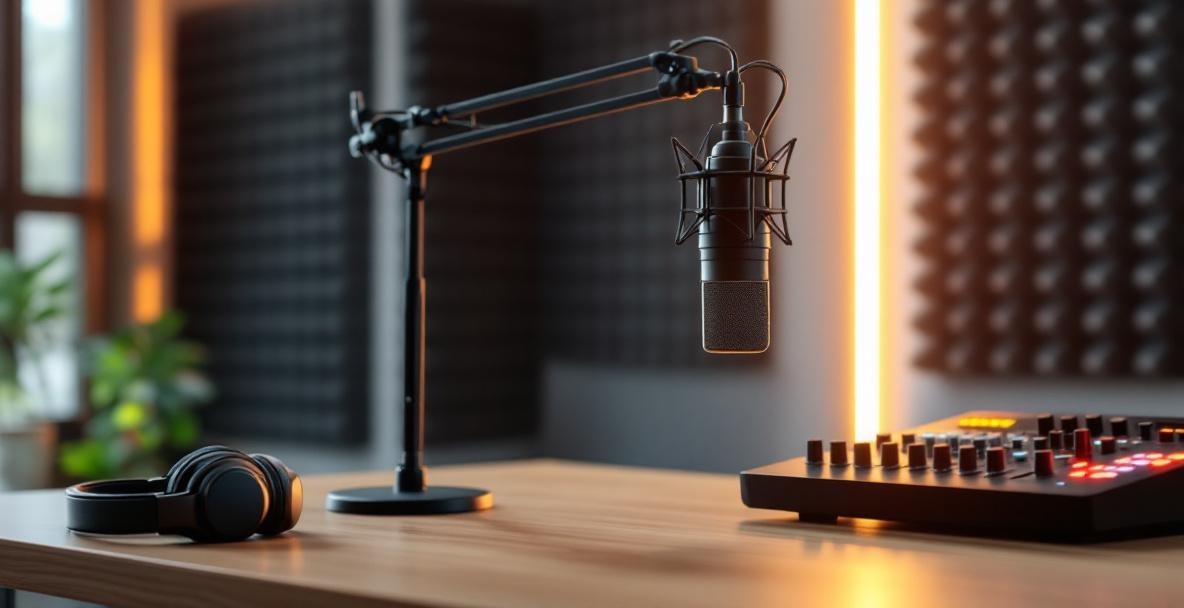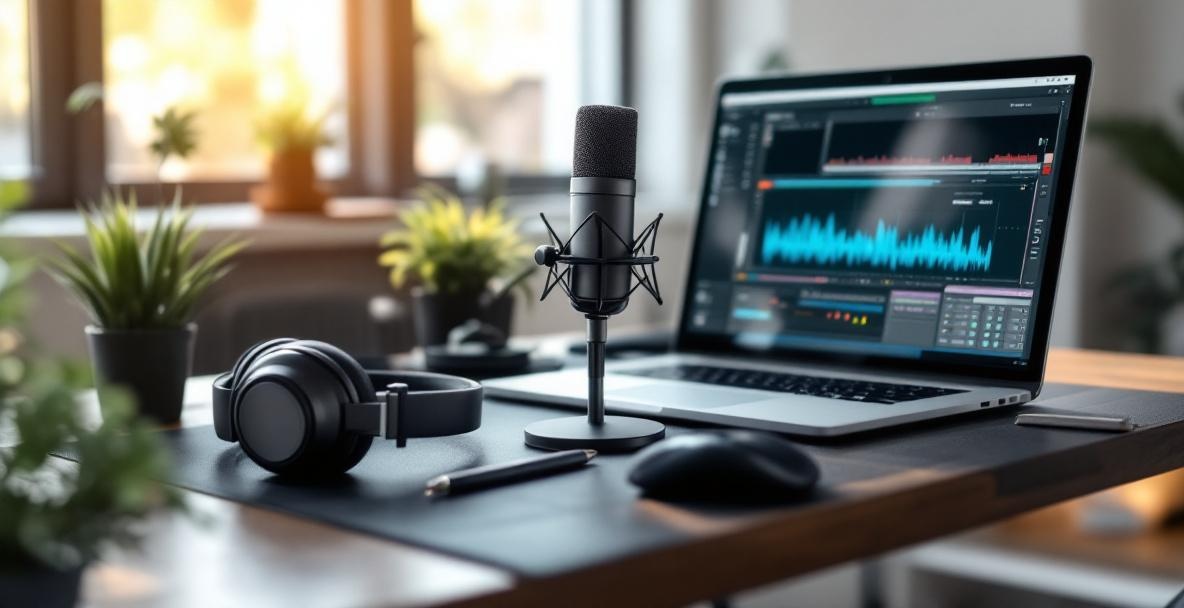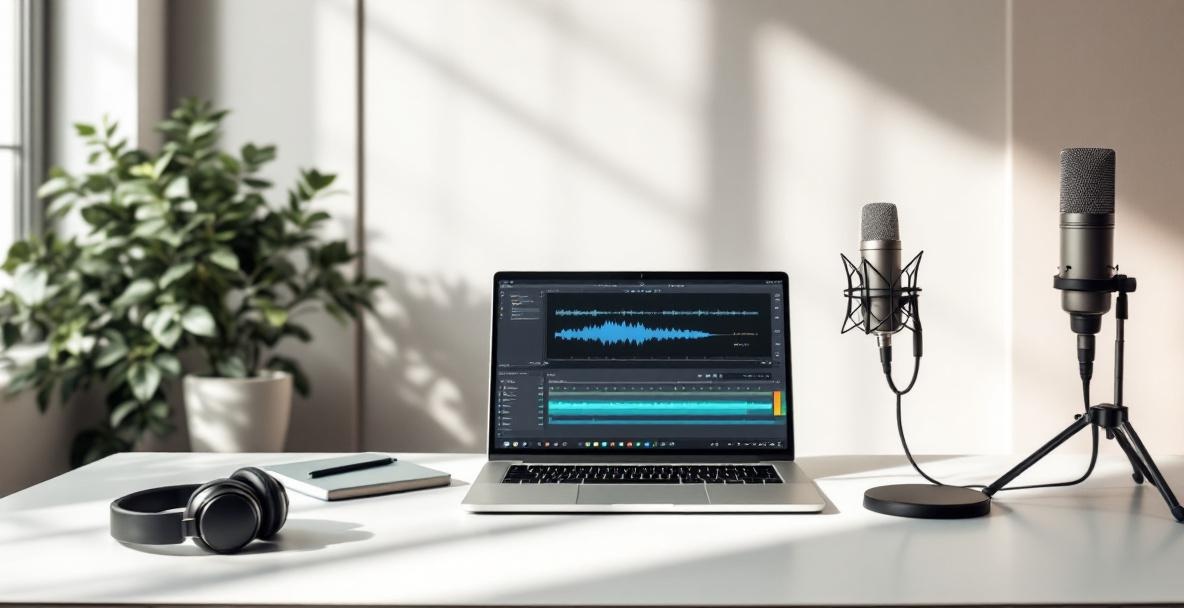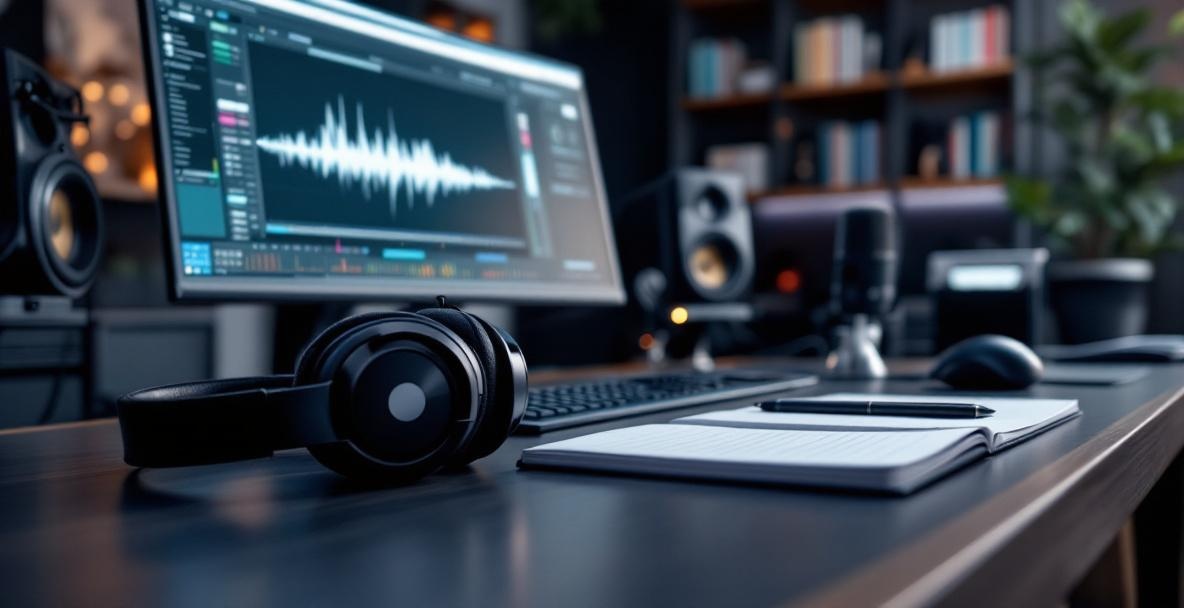Ever listened to a podcast and felt something was off? Bad sound can drive away listeners without them knowing why. Learning a few essential editing tricks can turn rough recordings into polished, professional productions. Whether you are just starting or looking to up your game, solid editing will boost your listener base and help your show stand out in a crowded field.
Why Great Sound Is Essential

How Listeners Really Hear Your Podcast
Your podcast's sound is a big deal. Imagine sitting down to listen and being distracted by echoing voices or unwanted background noise. When your podcast has crisp, clear audio, your audience can focus on your message without being pulled away by technical glitches. Great sound draws people in and makes every episode feel inviting, keeping listeners coming back time after time.
Our ears are tuned to notice even small mistakes in sound. Even if someone cannot explain what is wrong, they will sense that the quality is not right. Clean, even audio shows that you care about every detail. Consistent sound quality not only makes your podcast sound better but also builds trust with your audience.
In a sea of podcasts, the way you sound matters right from the start. New listeners quickly decide whether to stick around simply based on how professional your audio is during the first few moments. When your podcast sounds top-notch, it boosts your reputation and tells everyone that you mean business. Professional audio is a fast track to growing your brand and opening new doors with guests, sponsors, and peers.
The Basics: Setting Up Your Gear and Space

Picking Out Your Equipment
Before you dive into editing, having the right gear is key. Great podcasts can be made with modest equipment if you know what to invest in. A quality USB microphone will beat your computer's built-in mic any day and set you up for fewer hassles later. Quality gear makes a real difference when you come back to refine your sound.
It is just as important to have a good pair of headphones. They help you catch small issues that might otherwise pass unnoticed. Headphones also stop stray sounds from sneaking into your recording, which is especially useful during remote interviews. When it’s time to edit, reliable headphones will reveal little distractions like background noise or unwanted mouth sounds that you need to fix before releasing your episode.
Your recording space counts as much as your gear. Even the best microphone will pick up nasty echoes if you are in a bare room. Simple fixes like recording in a closet full of clothes or using a thick blanket to surround your mic can clear up your raw recordings. A well-prepared space not only saves you time later on but also makes your editing work easier.
Creating a Recording Space That Works
Where you record makes a big difference. Hard surfaces such as bare walls, hardwood floors, or big windows let sound bounce around and create echoes that are hard to remove later. Take a good look at your room and ask yourself if it feels like a hall or more like a cozy space. A quiet, controlled space can help you avoid that hollow, echoey sound that makes recordings feel unpolished.
You do not need to spend a lot on expensive panels. Even everyday items like cushions, blankets, or egg cartons can cut down on echoes. Some podcasters use a clothing rack with heavy drapes or record in a closet filled with clothes to soak up excess sound. The goal is to create a room that absorbs sound rather than bouncing it back. Practical setups like this save you loads of frustration during editing.
Keeping your recording space consistent is also key. Stick with the same microphone spot, settings, and room layout each time you record. This consistency makes editing smoother and ensures every episode sounds like part of the same show. Consistent recording builds a professional feel that your listeners will notice, even if they aren't aware of the details.
Fine-Tuning Your Edit

Cutting Out Unwanted Noise
Unwanted noise can ruin a good podcast. Even in a quiet setting, your mic might pick up the hum of a fan, the buzz of an air conditioner, or distant street sounds. Many editing programs have noise reduction tools that help clear up these issues. Using these tools to eliminate background noise is the first step toward a clearer podcast.
A smart tip is to record a few seconds of just the room noise before you start talking. This gives the noise reduction tool a sample to know what to remove. Be gentle with the settings because too much cleaning can make your voice sound odd. It is better to lower the noise than to try to erase it completely. Subtle processing keeps your voice sounding natural and engaging.
If you have constant hums from fans or air conditioners, turn those off during your recording session. A small change like this can save you a lot of editing time. When unexpected noises appear, such as traffic sounds, pause your recording or mark those spots so you can fix them later. Taking preventative measures means less work for you later on.
Keeping Your Sound Levels Even
Making sure every part of your podcast is at the right volume is key to a smooth listening experience. You do not want your audience to keep fiddling with the volume during an episode because some parts are too loud while others are too soft. This issue is common when different speakers use different distances from the microphone or speak in varying tones.
A helpful tool here is a compressor, which lowers loud parts and keeps quieter sounds clear. Most audio-editing programs come with a basic compressor that works well for voices. Start with a setting that brings balance and adjust it until you achieve consistent sound. Even volume levels make your podcast enjoyable from start to finish.
If you record multiple voices, try compressing each track separately before you mix everything together. This way, you can fine-tune each voice on its own and then blend them into a balanced final track. Finally, use a limiter on the overall mix to avoid any sudden loud peaks. Even sound is not just pleasant; it shows a level of professionalism that listeners appreciate.
Creating a Smooth, Natural Flow
Editing is about more than just technical fixes; it is also about making your podcast feel natural. Real conversations have pauses, stumbles, and moments where people talk over each other. A careful edit keeps these elements in place while snipping out parts that distract. Smooth editing helps maintain a flow that feels both real and engaging.
When you work on dialogue, listen for the natural rhythm of speech. Removing every pause can make the chat feel rushed, but keeping too many filler sounds might slow things down too much. The goal is to hold onto the natural breaks yet trim out long silences or excess "um"s and "ah"s. This balance is key to creating natural pacing that holds your listener’s attention.
For interviews, it can help to organize the conversation by topic rather than in strict order. Feel free to rearrange parts so that the discussion makes sense and flows better, all while being true to your guest's meaning. Thoughtful editing ensures that your final podcast is engaging and easy to follow.
Advanced Tips to Polish Your Audio

Adjusting Your Tone with EQ and Compression
Using EQ helps shape your podcast's sound by letting you adjust different parts of your voice. Every speaker has a unique tone, and a little tweaking can make a big difference. Start by applying a high-pass filter set at about 80-100Hz to remove any low rumble that muddies your voice. Tight EQ settings lay the foundation for clearer sound.
If needed, try a gentle cut at around 200-300Hz for deeper voices, or around 500Hz for higher voices, to remove any muddiness. A soft boost between 3-5kHz can add clarity and presence. The key is to keep things subtle; even a change of 2 or 3dB can help. Always listen on good headphones or monitors to be sure your tweaks are working as intended. Small tweaks go a long way toward perfecting your sound.
Enhancing Your Podcast with Music and Effects
Adding music and sound effects can boost your show from plain conversation to a richer audio experience. A catchy intro or outro sets the tone and gives your podcast a unique identity. Music between segments provides a smooth break for your listeners while keeping them engaged. Always be sure to use music that you have the rights to by checking sources such as Epidemic Sound or Artlist for safe options. Creative music choices bring extra flair to your episodes.
Keep your sound effects in check so that they add value rather than clutter the audio. Use them only when they emphasize a point or create the right mood for a story. Remember to mix effects soft enough that they do not overpower your voice. Balanced sound effects help maintain a clean, professional feel in your podcast.
For smooth transitions, try using crossfades instead of sudden cuts between music and dialogue. Let the track slowly fade in as you begin speaking and gently ease out when you stop. When music plays underneath your words, keep it low, around 20% of your vocal volume, and lower it even more during key points. Smooth transitions create a natural flow that enhances your listener’s experience.
Wrapping It All Up
Final Tips to Keep Getting Better
Creating a simple editing routine can save you time and keep your episodes consistent. It helps to have a checklist that covers everything from importing your audio to exporting the final file. Take a close look at the podcasts you admire and notice how they balance sound and editing. Ask yourself what makes their work shine and how they manage transitions. Consistent routines help you deliver top-notch sound every time.
Try recording a quick test before you start your full session. This lets you check your levels and catch unwanted noise early on. It is much better to notice a hiccup before you record an entire episode than to fix it during editing. Listening carefully with good headphones while you record also makes a big difference. Testing your setup is a smart way to prevent extra work later.
Keep in mind that editing blends technical know-how with a creative touch. You want clear, precise sound, but you also want the conversation to feel real. The aim is not to lose the human feel but to remove distractions that take away from your message. With practice, you will learn when to trim a section and when to let a natural pause stay. Real, human sound is what truly connects with your audience.
Connect With Fellow Podcasters
The world of podcast editing has many friendly experts and resources. You can find great advice in online forums, on YouTube, or in social media groups where fellow podcasters share their tips. Sharing your work for feedback is a useful way to learn and grow. Joining the community opens up new ideas and helps you improve your craft. At Castee, we built our platform because we know that great podcasts come from working together.
Editing methods will change as new technology comes out, so it pays to keep up with new tools, updates, and best practices. The effort you put into refining your editing skills will show in increased listener retention and audience excitement. Every episode is a chance to get a little better and deliver even better audio for your fans.
Ready to transform your podcast audio from amateur to professional? Visit Castee today to discover how our comprehensive podcast marketing solution can help you leverage your newly polished audio content for maximum audience growth. Our platform not only helps amplify your voice but provides the analytics to understand exactly how your improved audio quality impacts listener engagement and retention. Join thousands of podcasters who've already elevated their shows through our integrated tools and proven strategies.
Leave a Reply